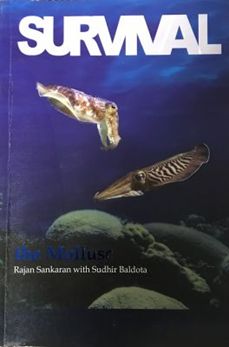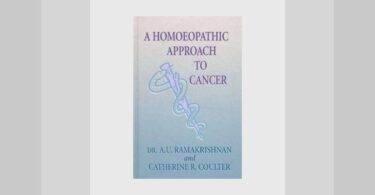Author: Dr. Rajan Sankaran with Dr. Sudhir Baldota
Published by: Homeopathic Medical Publishers, Mumbai, India
Year of publication: 2008
452 pages with index, full color, paperback
Reviewer: Vatsala Sperling

When this book appeared on the horizon, it was much awaited and long overdue. Students and practitioners everywhere were waiting to read what Dr Sankaran had to say about the various animal remedies that were being prescribed. Survival is one of the main features of the animal kingdom. This particular book is about molluscs and how they fare in the race for survival.
At the outset, before being sure of choosing a mollusc remedy, we have to be quite sure that the patient is calling out for an animal remedy. Along with describing the scheme of the book, the authors have gone into clarifying their approach to case taking and how to identify the subtle but surely present animal song.
Since it is the voice of the source itself that speaks from within, when we find something in nature, or in the universe, something that has the same energy, pattern and movement, then that would be the remedy. Though it sounds simple and pretty straightforward, source can be identified only at the very deepest level of the vital sensation. Grabbing onto superficial expressions might lead to erroneous prescriptions and unexpected failures.
Vital sensation itself has three levels, sensation A = kingdom, sensation B = subkingdom, and sensation C = source. During case taking we have to be sure of all three levels of sensation. Occasionally, level C may appear before B and A, but that must not give us an incentive to jump to a hasty conclusion about the source.
Sensation A is ascertained when competitiveness, victim/aggressor and survival processes are encountered. Sensation B, or subkingdom must be based on finding the expressions of the subkingdom. For example, in phylum / subkingdom Mollusca, we must look for and find expressions of withdrawal, retreating, hiding, escaping, soft/ hard, going into shell, being limited by a boundary, being caged etc.
At the sensation C, the non-human song would be most clear and the patient may express a quality of the animal. At this point, we do enter, with the patient, a vast area of the unknown. This is where, we must remain patient and keep exploring.
A section on recognizing the animal song is absolutely to the point and it takes you right thru the process of identifying an animal tune that the patient is presenting. Consider this section an extract of Dr. Sankaran’s entire teachings on animal song.
A list of 26 remedies is given on page 32, but currently, the remedy makers must have added several more mollusc remedies to their list of offerings. Mind you, this book was published in 2008 and now we are in 2022.
Just a few most important details of the anatomy, life cycle, food habits and attack and defense styles of molluscs are described as the authors introduce the molluscs to the reader. To be able to choose mollusc remedies, it is essential that we familiarize ourselves with these details. It is interesting to note that when patients describe a mollusc as the source, they mention source words related to various aspects of the molluscs, that could cover anything from the body and mantle, physiological functions, vulnerability, defense mechanism, qualities of the shell, experience in the shell, various threats encountered by molluscs, stages of mollusc life cycle, and even its natural habitat. This explains why we must know the remedies from the angle of a naturalist (zoologist, botanist, chemist….)
Now we go on to learn about class Bivalvia that include pearl, oyster, mussel and clam. After describing the chief details of the class Bivalvia, the authors take us to individual animals in this class and we get to read cases. Several homeopaths from around the world have contributed their cases in this book – this simply goes to show that the sensation approach is being tested, verified and corroborated across the world by various well-established practitioners and they are getting good results.
After the abbreviated cases, there is a list of important words and phrases extracted from the cases and you can consider them as expressions of mulluscs coming straight from the patient’s words. Each case is rounded off with a mention of the prescription, as well as brief follow ups.
In this similar fashion, other classes of molluscs, namely, gastropoda and cephalopoda, and representative members of these classes are described further along in this book. Summary of Mollusca and comparison between the three classes of Mollusca is literally, the entire book presented as a quick reference capsule, so to speak.
This book has a generous sprinkle of color pictures of various molluscs that the authors are writing about. These pictures with ocean in the background, drew me in and made me wonder about the place of the molluscs in the larger scheme of things, just as when we gaze into the ocean and its endless waves crashing onto the sandy beach, we may begin to wonder about our own place in the larger scheme of things.
In all, as practitioners, you are sure to encounter Mollusca themes in your patients. To make your remedy choice exact and precise, you must surely refer to and read this book. It has a level of clarity, no-nonsense straightforwardness and simplicity that will make you love this book and make it your favorite.





